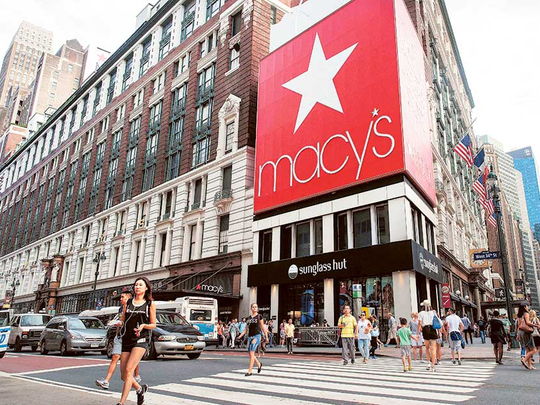
New York: When a significant other suggests they need some space to think through the relationship, it’s typically code for “I think I want to break up with you but kinda just want to dip my toe in singledom before I break the bad news.”
So when Coach, Michael Kors, Kate Spade, and Ralph Lauren all said in recent days they were pulling out of, or reducing inventory in, department stores, it became clear more disappointing news was in store for struggling department-store chains such as Macy’s and Nordstrom. Indeed, on Thursday, Macy’s reported a 2.6 per cent drop in second-quarter comparable sales, its sixth straight quarterly decline.
On earnings calls this week, brands assured department stores they still really care about the sales channel. But they still blamed much of their second-quarter earnings malaise on a slowdown at the chains, and the malls that house them. The brands said they were just trying to look out for themselves.
So how big of a deal would it be if this quartet of modern luxury brands — Coach, Michael Kors, Kate Spade, and Ralph Lauren — really did pull out of one of these department stores altogether?
Of the six largest US department store chains, Macy’s has the biggest exposure to the four brands, buying roughly $1.5 billion (Dh5.5 billion) worth of their stuff annually, according to Bloomberg supply-chain data. And after Macy’s buys this stuff from the brands, it takes a markup when it sells the goods to consumers, meaning a bigger revenue number for the chain.
In the big picture, the money Macy’s makes from these brands represents just a fraction of the $27 billion in revenue it notched in 2015. It’s still the biggest US chain, even if its stock price has been decimated.
Still, there’s more to this relationship than money.
These brands are often big traffic drivers for shoppers — especially for customers that don’t live in major cities such as New York or Los Angeles and can only touch and feel one of these $400 handbags at a Macy’s or Nordstrom. Of course, that’s what the Internet is for, but research shows the more expensive a product is, the more customers want to judge the quality of it in person.
So what can a department store like Macy’s do? For one, it could follow the brands on a road map to reinvention.
Coach said this week it was pulling out of 25 per cent of its department-store locations, or about 250 stores. Sales at this bottom rung of stores no longer justified Coach’s presence there; higher-end customers weren’t shopping there anymore. Macy’s should take a hard look at the stores Coach is abandoning and ask if they’re worth keeping open at all.
To its credit, Macy’s said Thursday it would close 100 stores. It probably has more to go, though, given that this round of closures will only get it back to 2006 sales-per-square-foot numbers. But this is a good start.
Michael Kors, meanwhile, said it would no longer let department-store-wide sales and coupons apply to its goods. Such promotions force Michael Kors to match the discounts online and in their own retail stores. That pushes the Kors brand downmarket, tarnishing its luxury appeal. Macy’s, too, should realize that a winner rarely emerges in the race to be the biggest discounter, and find other ways to entice shoppers.
If it doesn’t, then Macy’s relationship status with brands will quickly devolve from “it’s complicated” to straight-up “single.”












